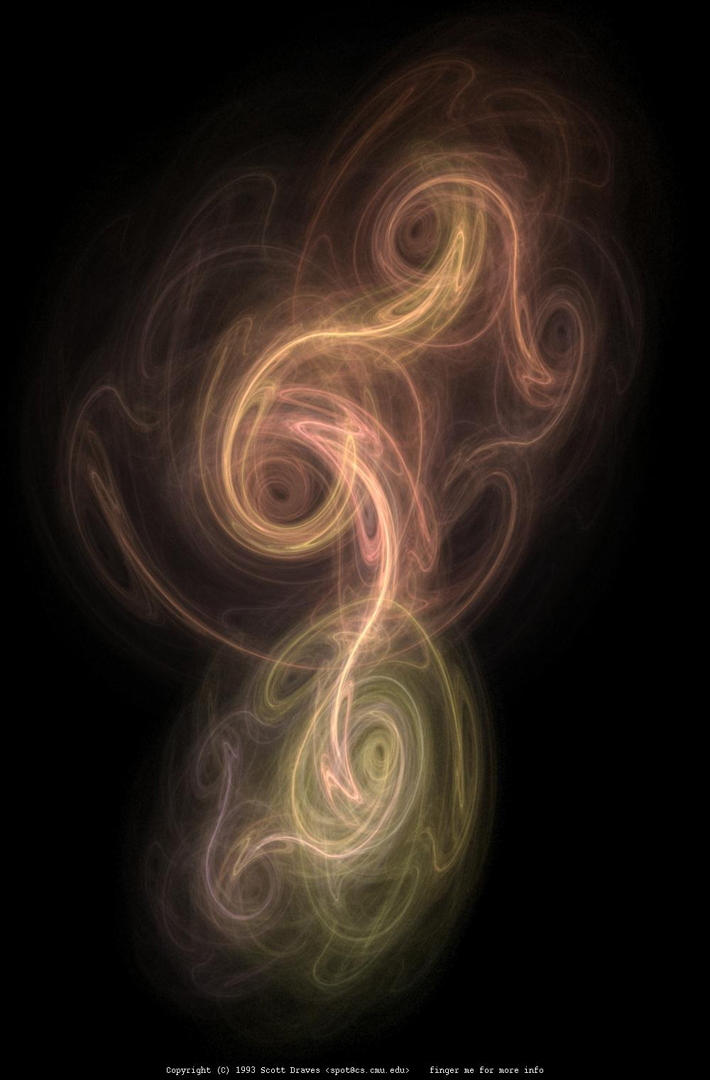“Electric Sheep” by Scott Draves
Title:
- Electric Sheep
Artist(s) and People Involved:
Exhibiting Artist(s):
Symposium:
Venue(s):
Medium:
- Open source software
Artist Statement:
The name Electric Sheep comes from Philip K. Dick’s novel Do Androids Dream of Electric Sheep. It realizes the collective dream of sleeping computers from all over the Internet. The project is an attention vortex. It illustrates the process by which the longer and closer one studies something, the more detail and structure appears.
When the software is activated, the screen goes black and an animated ‘sheep’ appears. In parallel, the screen-saver client contacts a server and joins the distributed computation of new sheep. This idea was inspired by the SETI@home project, but instead of searching for aliens, electric sheep brings artificial organisms to life.
The screen-saver is a window into a visual space shared among all users. Clients render JPEG frames and upload them to the server. When all the frames are ready the server compresses them into MPEG. The clients download the MPEG sheep and display them one after another in a continuous, ever-changing sequence. Both clients and server are open source software.
Each sheep is specified by a genetic code, and the flock as a whole is subject to aesthetic evolution. The creation of new sheep is dictated by a genetic algorithm with mutation and crossover, where mating and survival are influenced by votes from the users.
Electric Sheep investigates the role of experiencers in creating the experience. If nobody ran the client, there would be nothing to see. As more clients join, more computational muscle becomes available, and the quality of the graphics increases. The more people who participate, the better the graphics look.
As more users vote for their favorite sheep, the evolutionary algorithm more quickly distills randomness into eye candy. Perhaps attention acts on information the same way gravity acts on mass: attraction begets attraction and a positive feedback loop is formed.
Category:
All Works by the Artist(s) in This Archive:
- Scott Draves
- More Art Events from Scott Draves in this archive:

Electric Sheep
[ ISEA2002]
Gen 244 (2011)
[ ISEA2013]






